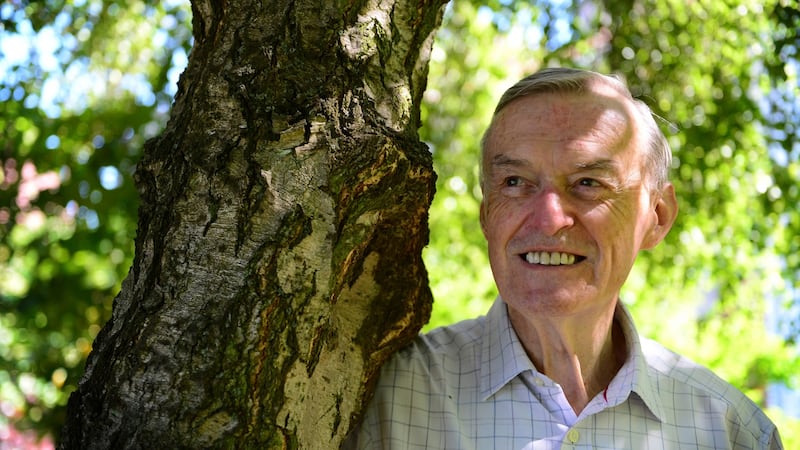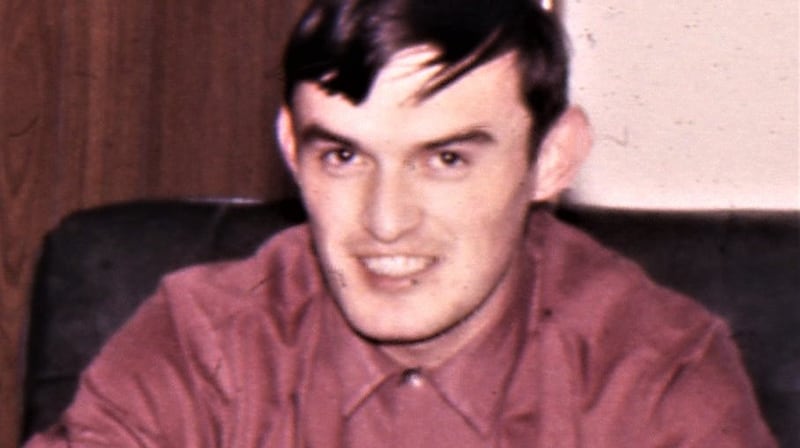I left UCD in the early 1960s with a maths and physics degree, which helped me find work as a support contractor to Nasa in Houston later that decade.
There, I would play a small part in a major historic event, but that wasn’t the main attraction at the time. Fifty years ago, the big draw for me was the huge salary (by Dublin or London standards), the shirt-sleeve winters, the sandy beaches of the nearby Gulf of Mexico, and Houston’s surprisingly varied cultural scene.
I was born in Dublin but lived in Dundalk until the age of nine, after which our family moved to Dublin. After a solid grounding at the Christian Brothers in Stillorgan, Co Dublin, I progressed to UCD.

The work
So what did I do for Nasa? In today's jargon my main job was to devise algorithms for Nasa's computers to use to navigate Apollo to the moon. Isaac Newton had worked out the basics of movements through space, tweaked a bit later by Albert Einstein, and in the 1930s the British invented radar, which gave us data to feed into Newton's maths.
That all worked pretty well going from the Earth to the moon, and it also worked fine when orbiting the moon – until you got close to the surface (which is hard to avoid doing if you are going to land there).
Robotic mapping satellites were found to disobey Newton’s maths in 1967 when they got down below 100km altitude to take detailed photos.
It was soon shown by two Nasa scientists that the problem was caused by the unexpected peaks and troughs of the moon’s gravity field, with the peaks most noticeable over the man-in-the-moon’s “eyes” and other large circular dark areas.
This meant that our predictions of where Apollo would be an orbit or two ahead were very inaccurate – each orbit we tried to predict was several kilometres out. I led a small team that looked for a way around this.
We tried collecting radar data over two orbits and predicting forward one orbit. We tried mixing in sextant sightings taken by the astronauts with the data from the Earth-bound radars.
We tried several formulas for the moon’s gravity field. The formulas tried to describe to what extent the moon was not a uniform sphere and varied in sophistication from four mathematical terms to 121 terms.
None of these approaches improved matters significantly. The gravity model with the most mathematical terms often gave the worst results.
Armstrong had to take over control from the guidance computer, which was steering them to the boulder-strewn edge of a deep crater
The result was that Neil Armstrong and Buzz Aldrin in the Apollo 11 lunar module (christened the Eagle) overshot their intended landing site by about 6km.
Armstrong had to take over control from the guidance computer which was steering them to the boulder-strewn edge of a deep crater. He flew the Eagle horizontally for another 400m or so to a flat zone before putting down and declaring "Houston, Tranquility Base here; the Eagle has landed". The landing video at www.hq.nasa.gov/alsj/a11/video11.htmlcaptures the drama of these moments.
We noticed the overshoot of Apollo 11 as it came from behind the moon a few seconds earlier than expected on its last orbit before the landing.

For Apollo 12, four months later, a workaround was introduced whereby measurement was converted into a distance, and this single number was radioed up to the crew, who entered it into their guidance computer. The computer adjusted its path accordingly and they landed bang on target a half an hour or so afterwards.
It would be 30 years before a sufficiently accurate mathematical formula for the moon’s gravity was available, and not until 2012 was the gravity of the hidden far side of the Moon fully mapped.
A latitude problem
Seven months before Apollo 11, Apollo 8 left Earth orbit headed for the moon, tracked by more than a dozen Nasa radar stations around the globe. The radar data streamed into mission control in Houston, where Nasa processed it to calculate the trajectory of the Apollo spacecraft and the manoeuvres needed to get it to its destination.
This was the first flight of the Saturn 5 super heavy-lift rocket to carry humans. It was also the first spacecraft controlled from Houston that went beyond Earth orbit, so my team was tasked to calculate the trajectory in parallel with mission control, using the off-line software that we normally used for detailed analysis before and after the flights.
With Apollo 8, 12 hours into its three-day trip to the Moon, we noticed that radar data from four stations seemed to be systematically in error. A glance showed that the stations had one thing in common. They were islands: Ascension Island, Hawaii, Canary Island and Guam.
We agreed with Nasa that the likeliest reason was that we were using the wrong longitude values – determining longitude accurately was a centuries-old problem, which had been solved to a great extent by John Harrison in the 18th century with his high-accuracy marine chronometers.
The data from the remaining 10 or so stations that weren’t exhibiting errors was sufficient to allow the Apollo 8 mission to be completed.
The highlights
For the general public there were two highlights. First was the TV broadcast on Christmas Eve 1968 when the crew took it in turns to read from Chapter 1, verses 1 through 10 of the Book of Genesis in the King James Bible (“In the beginning God created the heaven and the earth, etc”) while the TV cameras pointed at the forbidding landscape of the moon below as it gradually darkened with their approach to the terminator (day/night dividing line).
This image inspired a generation to see the Earth as a single and fragile body
The second highlight was the earthrise image which showed the small blue Earth in the distance contrasting with the cratered, lifeless surface of the moon in the foreground.
This image inspired a generation to see the Earth as a single and fragile body, and with life-supporting conditions that were at odds with the bleak conditions on other solar system bodies.
Before John Harrison, ancient mariners had found that longitude could be off by tens, even hundreds, of miles. The scale of the Apollo 8 longitude errors seemed to be of the order of 100-300 metres. I was given the job of working out the correct longitudes before the next Moon mission – Apollo 10, five months later.
We collected radar data from all previous deep space missions tracked by those Nasa stations, processing it in our software to calculate a new longitude value for each of the island stations. We also had to calculate errors in the clocks at all of the stations for each of the missions to counteract the tendency of those clocks to drift a bit over the course of weeks and months.

Nasa’s data committee accepted our values as the ones to use, and the errors were not seen again on the later Apollo flights.
I was lucky enough to receive the Apollo Individual Achievement Award (endearingly known at the time as “Snoopy awards”) for this work from Neil Armstrong shortly after he came out of post-mission quarantine in August 1969.
The Houston scene
At that time the music director of the Houston Symphony Orchestra was the famous jazz pianist André Previn, adding a touch of glamour to the local cultural scene. Besides music, I recall a one-man show by Sammy Davis Jr which ended at 1:30am when the theatre manager came on stage and asked him to stop because the staff wanted to go home.
A one-man show by Bill Cosby also sticks in my mind as the most hilarious comedy act I have ever witnessed – we were of course unaware at the time of the sex offences he was allegedly engaging in behind the scenes.
A concert by Frank Sinatra for all the people in Houston who worked on Apollo 11 was another highlight.
The astronauts
The astronauts were distant and vague figures as far as I was concerned. The seven-day weeks that I and they worked in the year leading up to Apollo 11 left little time to socialise beyond an immediate circle of friends.
By the time Apollos 8, 10, 11 and 12 had been to the moon, the personalities were starting to emerge from the shadows. Armstrong, Aldrin and Collins came across as the best of the bunch – fully focused during their mission but articulate and happy to engage in banter and generally let their hair down when off duty.
Armstrong and Collins remained level-headed despite their fame, and Aldrin eventually did too
The later missions had a spate of hiccups that seemed to stem from an overly casual approach to the job by some astronauts: a TV camera destroyed by inadvertently pointing it at the sun, hitting a golf ball while on the moon (“Why are we paying to send astronauts to play golf on the moon?” fumed one congressman) and so on.
In later life Armstrong and Collins remained level-headed despite their fame, and Aldrin eventually did too after a bad patch in his middle years.
As for me, by mid-1970 it was clear that Apollo was running down, so before being pushed I jumped to join the embryonic European Space Agency in Holland, working on weather satellites and the Hubble space telescope, then later to run the space department at a software multinational in the UK from which I retired last year.
My son was born in Toulouse, France when I worked at the French Space Centre there and my daughter in Surrey, where I have lived since 1980 with my wife.
The children’s links to Ireland are strong: my son lives in Dublin with his Irish wife and their two daughters. My daughter, who lives in London with her partner and their daughter, was for a time the Irish national weightlifting champion.
As I approached retirement age I began writing books about space programmes – most recently about the race to the moon in the 1960s and the current plans to send humans back to the moon.
Pat Norris is the author of Returning People to the Moon after Apollo.










